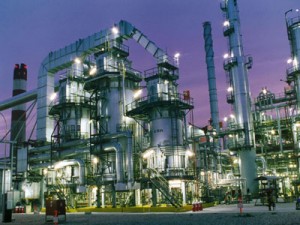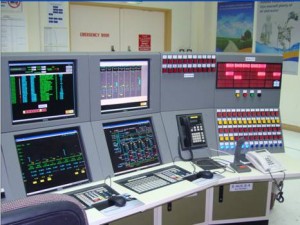We learned about the Ten Critical Decisions in Operations Management and how businesses apply these decisions for success.
In large industrial manufacturing processes, devices called Analyzers are used to report high level results and system status to the control system at any moment during the process operations. In the petrochemical industry, Analyzers measure, define and report on flow or quantity rates during the petrochemical process.
Many Analyzers are connected to a custom tailored DCS (Distributed Control System) on which all control activities are performed.
This means in effect that controller elements in the manufacturing process are distributed throughout the system in a series of component subsystems, each of which is controlled by one or more controllers. The combined system of controllers is then connected to commuter networks for monitoring and analysis. Vistanet (computer monitoring network) is one of a number of hardware & software systems used to interface between a number of Analyzers and DCS system.
On July, 2011 during an upgrade of the Vistanet system some of the Analyzer communication reports were lost. This occurred due to faulty processors in the network and a breakdown of the normal input and output communications protocol in the input and output
instruments. This resulted in a total plant shutdown due to losing the control on the DCS side. Unfortunately, in most cases a breakdown in the DCS system could possibly result in the major slow down in the manufacturing system with other knock on problems and disruptions. On this occasion however, the worse case occurred; that is a total plant shutdown which can cost up to $ 5M per day in losses.
The total possible loses calculate as follows.
Production lost (to flare)………………………………………….,……..….…$ 3.5 M in (24 hrs)
Man-hour to return to commission……………………………,.………….$ 0.450 M
Equipment damage due to emergency plant shutdown….…..……..$ 0.750 M
Penalty payment to local organization due to emission.…………….$ 0.300 M
TOTAL………………………………………………………………..……..…………$ 5.00 M
Immediately after the breakdown, the production department manager called my manager regarding this problem and my manager assigned me to solve this critical problem by giving me full authority in order to avoid production loses. This problem was new for me and it had not happened on my watch before, so I faced some difficulties in dealing with it. Add to that the fact that we did not have the correct spare parts available in the company in the warehouse. The pressure was now on. So I took rapid action. I began by contacting a vendor-supplier in Saudi Arabia to fast deliver to us the replacement materials. I stressed the urgency of the matter and immediately followed this by preparing a plan and time managed schedule of action in order to try to solve the breakdown problem.
In a series of rapid emergency meetings with my colleagues, (a production supervisor, an engineering specialist, and four on site technicians). I clarified with them the critical nature of the problem. We discussed my emergency plan and I assigned tasks and jobs according to the rapidly drawn emergency schedule. We worked one long day, found the problems and resolved the communication issues in the production system. The job was completed successfully and safely.
What can be changed to make the critical incident outcome better?
How the ten critical decisions are used in this incident?



I will try to answer the second question, first. How the ten critical decisions are used in this incident? To begin with the critical decision of maintenance, it appears that you and your colleagues, (a production supervisor, an engineering specialist, and four on site technicians)are responsible to fix the matter. Process and capacity design would be the next critical decision, because now you have to figure out what technology you will need in order for the production to start moving again. You then realized your Inventory decision and went used the supply chain management decision to order the appropriate parts with fast delivery. Then finally back to the maintenance having to put the newly purchased items back into the production line. There may be more, but these ones stood out to me the most. TO answer the first question, What can be changed to make the critical incident outcome better? knowing Inventory, material requirements planning, and JIT will be help to make sure you are prepared better in the future. Finally managing the quality of technology needed for production would have helped substantially.
Thanks for this amazing article. I think you should write an article about liquid packaging machine manufacturer this will be very helpful.